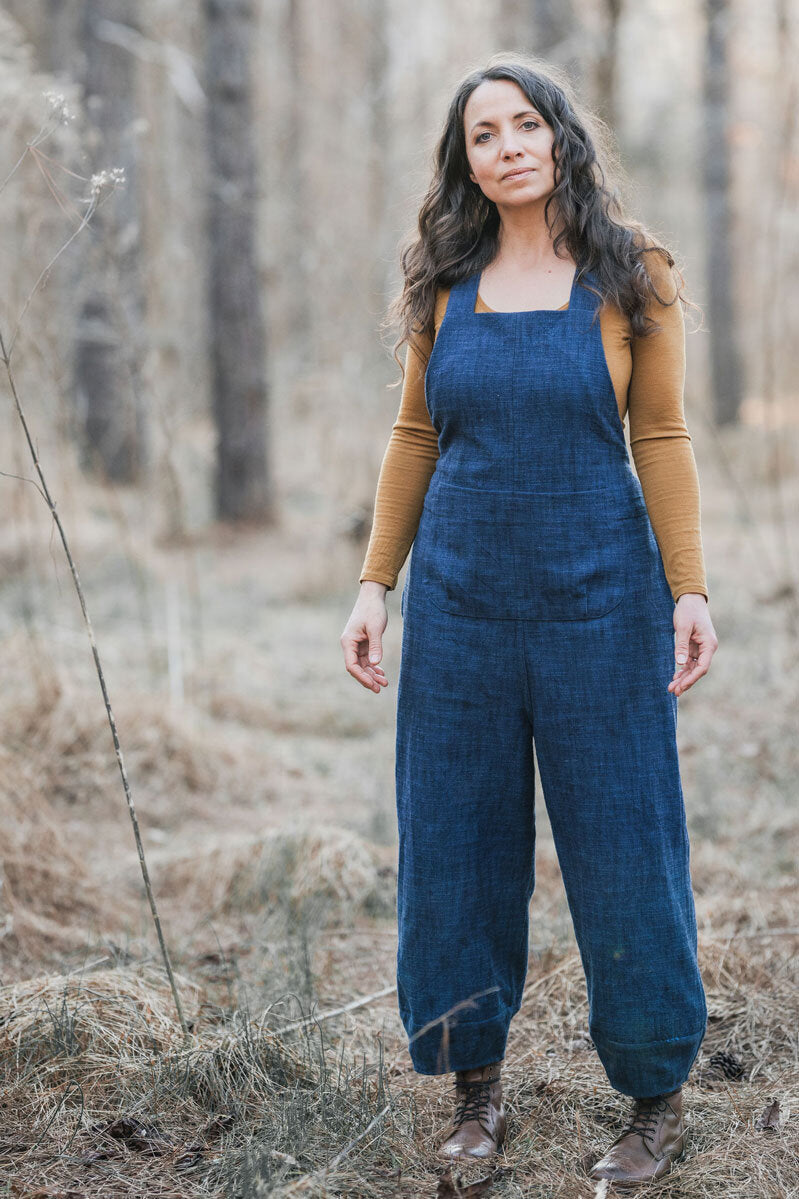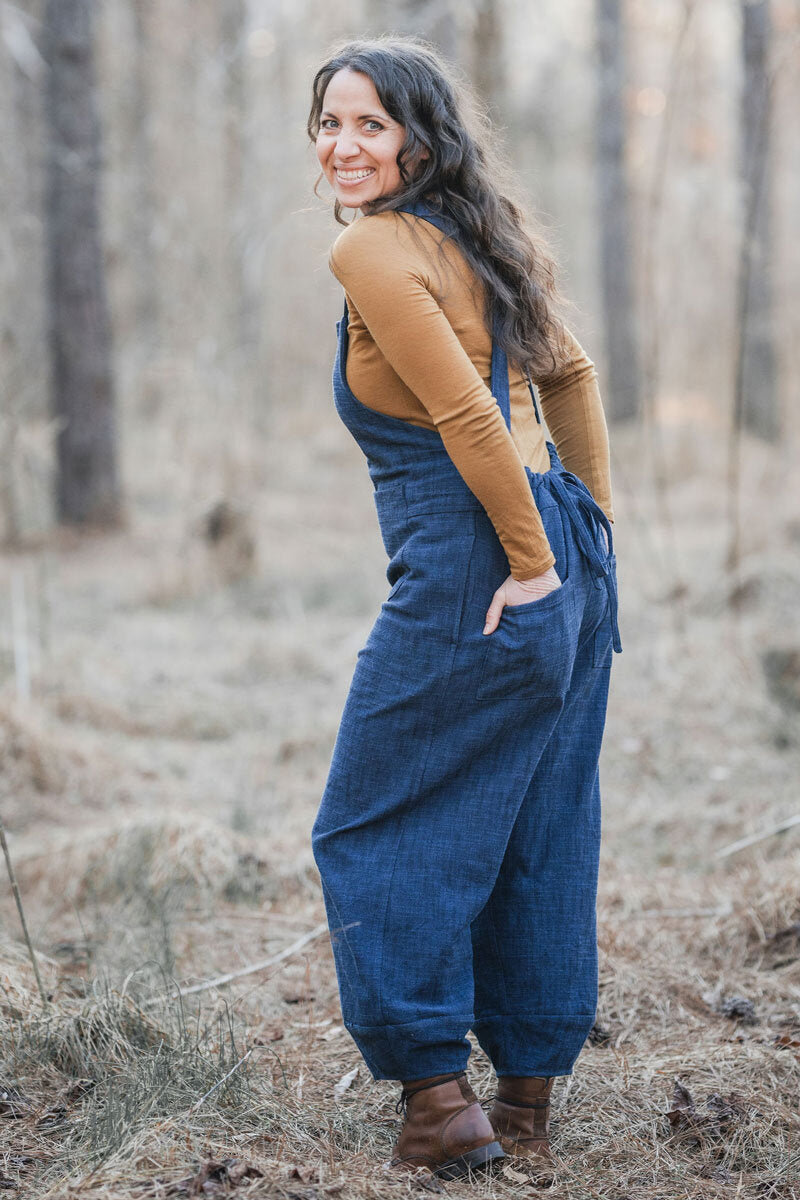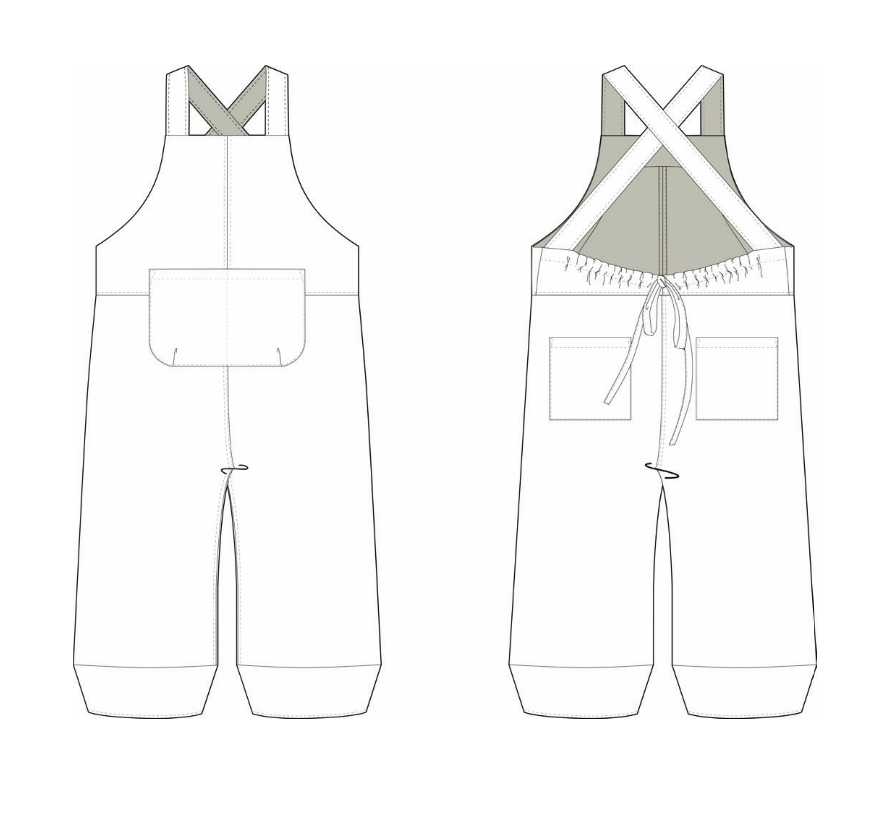Sew Liberated Otis Overalls
We print out the A0 pattern sheets, but you’ll need to download the digital instructions, as we don’t print these. The PDF files will be emailed immediately after purchase, and the printed A0 pattern sheets will be dispatched next working day.
Buy the Otis Overalls sewing pattern from Sew Liberated. A playful twist on overalls, Otis brings a bit of whimsy to the everyday. Featuring a statement lantern cuff and an easy wearing gathered back, the Otis Overalls have a modern utility vibe.
Otis’ bold silhouette is formed with shaped seams on the lower leg and an ankle-length hem. The fit is relaxed, with a dropped crotch, roomy and plentiful pockets, and a drawstring back waist closure for pull-on comfort and ease.
Versatile and appropriate to any season, the Otis Overalls will become a key part of your sustainable wardrobe. Perfect for gardening, afternoons out, running errands, and anything else you might get up to, they pair well with the Stasia Tee, a bodysuit, or a cropped boxy tee like the Strata Top.
This sewing pattern is available to buy in the following formats:
– PDF (available to download immediately after purchase). What is a PDF?
– PDF pattern + Printed A0 copy shop (We print out the A0 pattern sheets, but you’ll need to download the digital instructions, as we don’t print these. The PDF files will be emailed immediately after purchase, and the A0 pattern sheets will be dispatched next working day). What is Copy Shop?
Suggested fabrics: The Otis Overalls are designed for mid-weight woven fabrics, such as linen (4-6 oz/160-200 gsm), gabardine, lightweight twill or denim, or light canvas. Softer bottom-weight options like Essex linen, silk noil, Mora slub linen, and Brussels washer linen will create a softer leg line and a warm weather feel. You want enough body and stability to support the shape of the pant leg, and enough durability for the waist tie.
You may choose to use a different, lighter weight fabric for your facings and side pockets. If your main fabric is quite sturdy, using a lighter fabric like chambray or cotton shirting will allow the waist tie to gather more easily. Be careful to choose a fabric that matches or coordinates, since it will be visible along the gathered edge and on the bib facing when you move and bend.
Fabric requirements: 45″ (1.2 m) wide fabric: 3.75 - 4 yd (3.4 - 3.7 m) // 54″ (1.4 m) wide fabric: 3 - 3.3 yd (2.75 - 3 m).
Sizing: US 0 – 34 (approx. UK 6/8 – 32/34, based on our standardised size chart). Please also check the designer’s size chart and finished garment measurements.
This pattern is drafted for a height of 5'5" (165 cm). The waist seam sits at the high hip, and the hem falls just above the ankle bone.
Since the waist is shaped with a drawstring, you can use your hip measurement as the deciding factor if your waist and hip fall into different sizes.
Notions: Wonder Tape, 1/4" (6 mm) wide; lightweight fusible interfacing.
PDF pattern includes: Step-by-step instructions; US letter/A4 print-at-home pattern (35 pages for sizes 0-24, 42 pages for sizes 22-34); A0 copy shop pattern (2 sheets for sizes 0-24, 2 sheets for sizes 22-34) // Layers: Yes // Projector file: No.
If you’re looking for more maker inspiration, check out the latest sewing pattern reviews from the sewing community. We also have a sewing blog to keep you up to date with all the news from the world of sewing.
If you’re looking for maker inspiration check out our blog. With weekly updates on new patterns, styling ideas and maker inspiration, it's not to be missed.
Cart
Your cart is empty
Spend another £50.00 and get free shipping!















